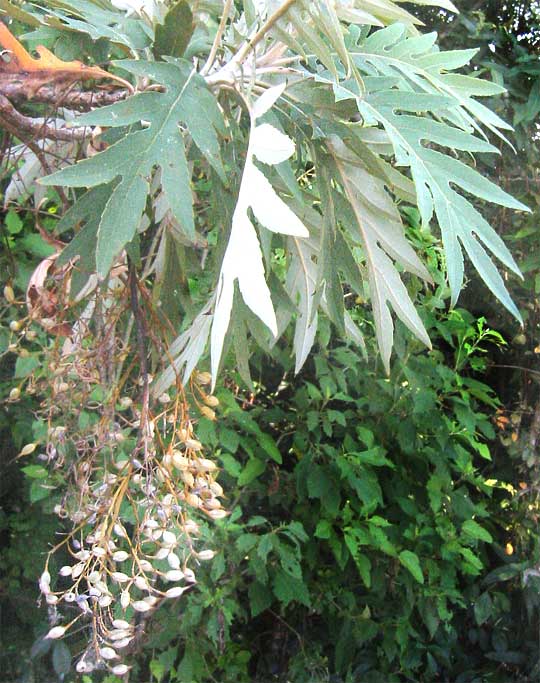Excerpts from Jim Conrad's
Naturalist Newsletter
from the April 21, 2008 Newsletter written in the community of 28 de Junio, in the Central Valley 8 kms west of Pujiltic, elev. ~700m (2300ft), ~N16.331°, ~W92.472°; southeastern Chiapas state, MÉXICO
BLOOD-WEEPER
I doubt that anyone uses the name
"Blood-weeper" for the shrub abundantly fruiting nowadays and shown below:

"Blood-weeper" is just the literal translation of the Spanish name, Llorasangre, which indicates that if you wound the shrub it exudes a rusty-red sap. Colored sap from this species isn't surprising since it's a member of the Poppy Family, famous for it brightly colored exudations. The Opium Poppy bleeds a milky sap, Prickly-poppies produce a yellow juice, North America's Bloodroot bleeds orange-red, etc. "Blood-weeper" is in the genus BOCCONIA, but I can only guess which of Chiapas's several Bocconia species it is -- B. frutescens would be a good guess. When I arrived here in January the plant was conspicuously flowering but now its fruits draw your attention.
Belonging to such a notorious family, you might expect that it's an important traditional medicinal palnt, and that's the case. Las Plantas Medicinales de Mexico reports that it's toxic, 5 centigrams capable of killing a dog by causing paralysis of the respiratory and circulatory systems. Traditionally in Mexico its rusty sap has been used against intestinal worms and as a purgative. Its cooked and ground leaves cure ulcers, and the plant's active ingredient, boconina, can be used as an anesthetic.
One morning a man walked past my door carrying a big armload of the plant's leaves, which he planned to cook in a pot. He said he had a cow who'd gotten tangled in barbed wire and he planned to cleanse her wounds with the juice and apply the leaves as a poltice.